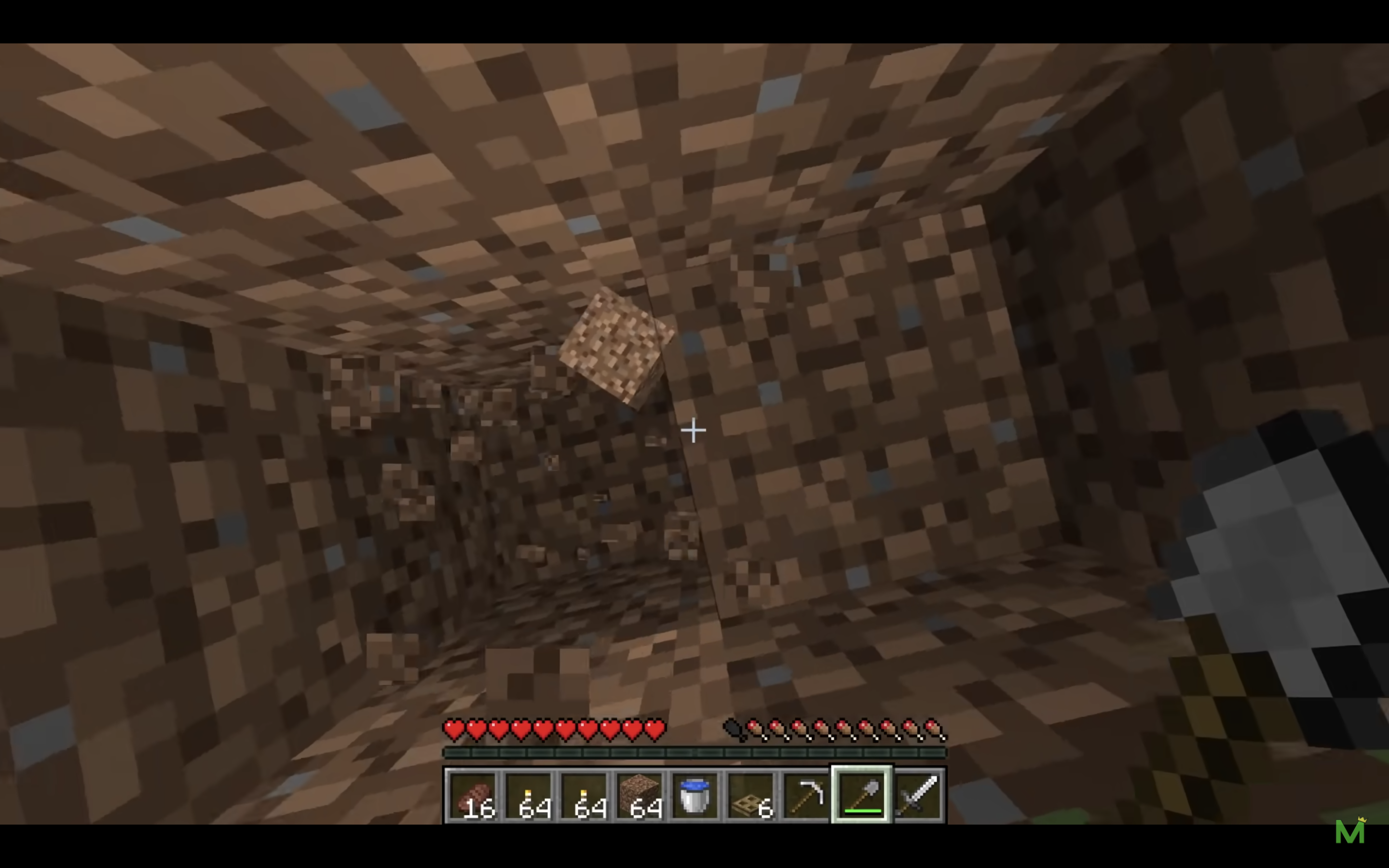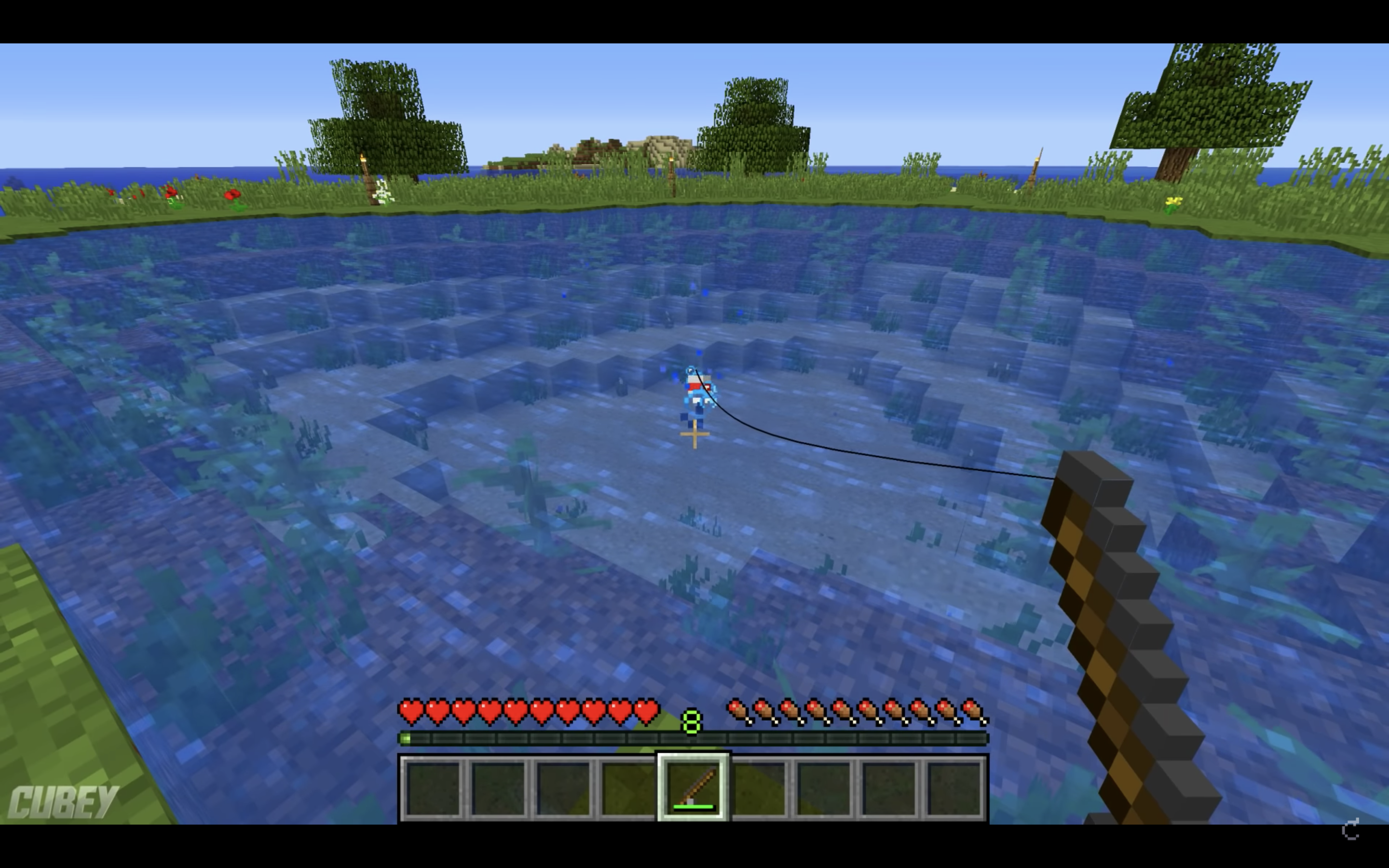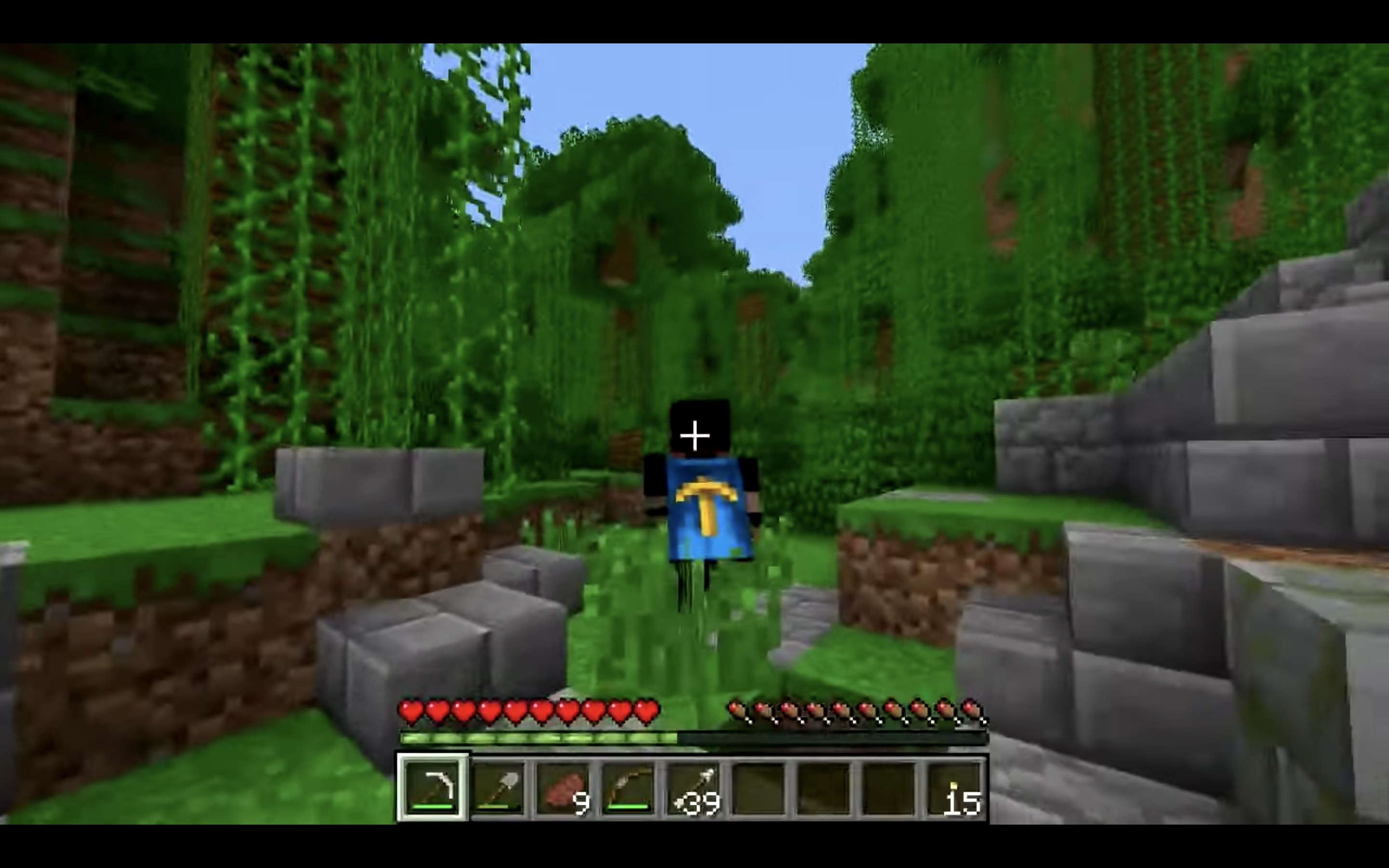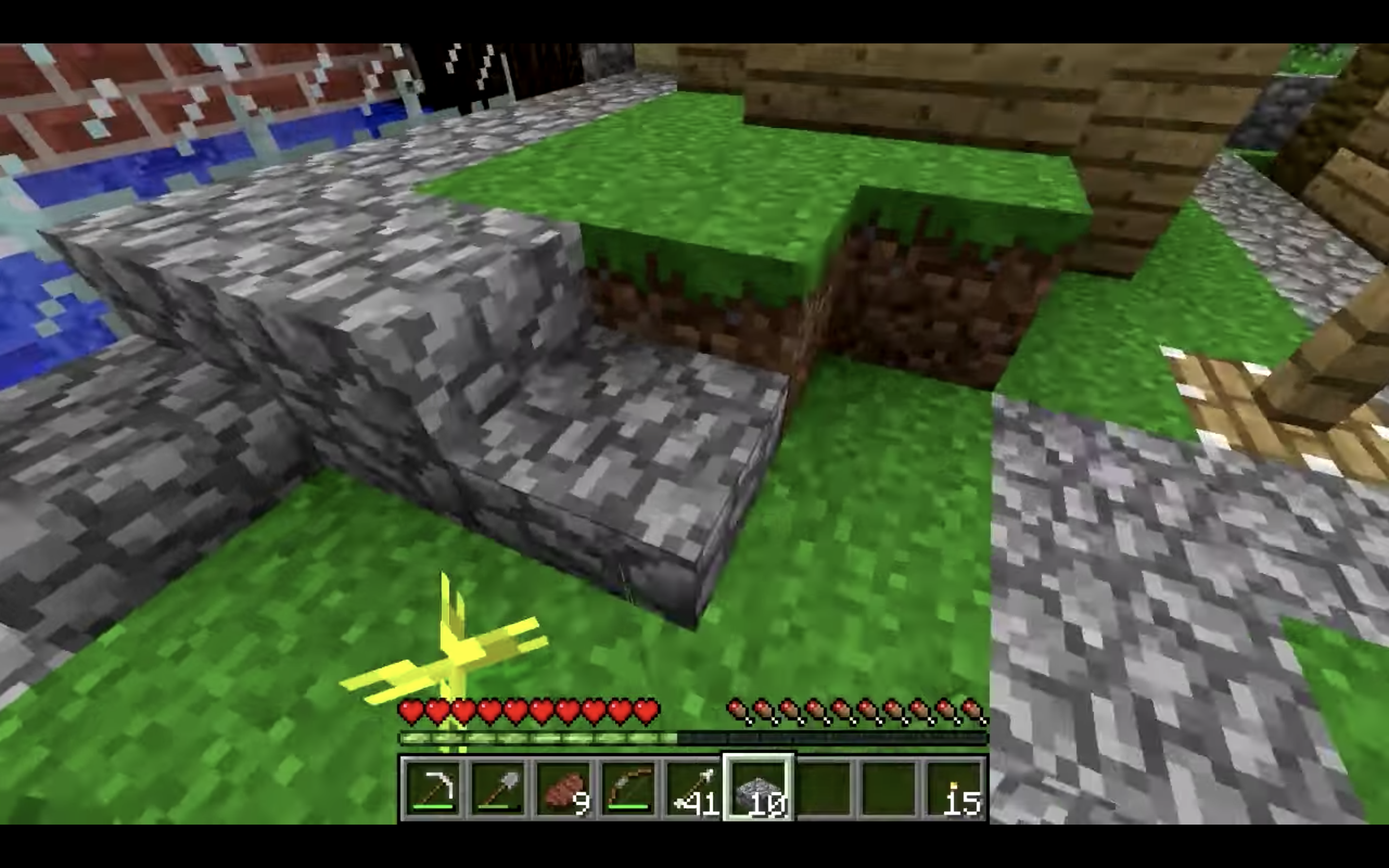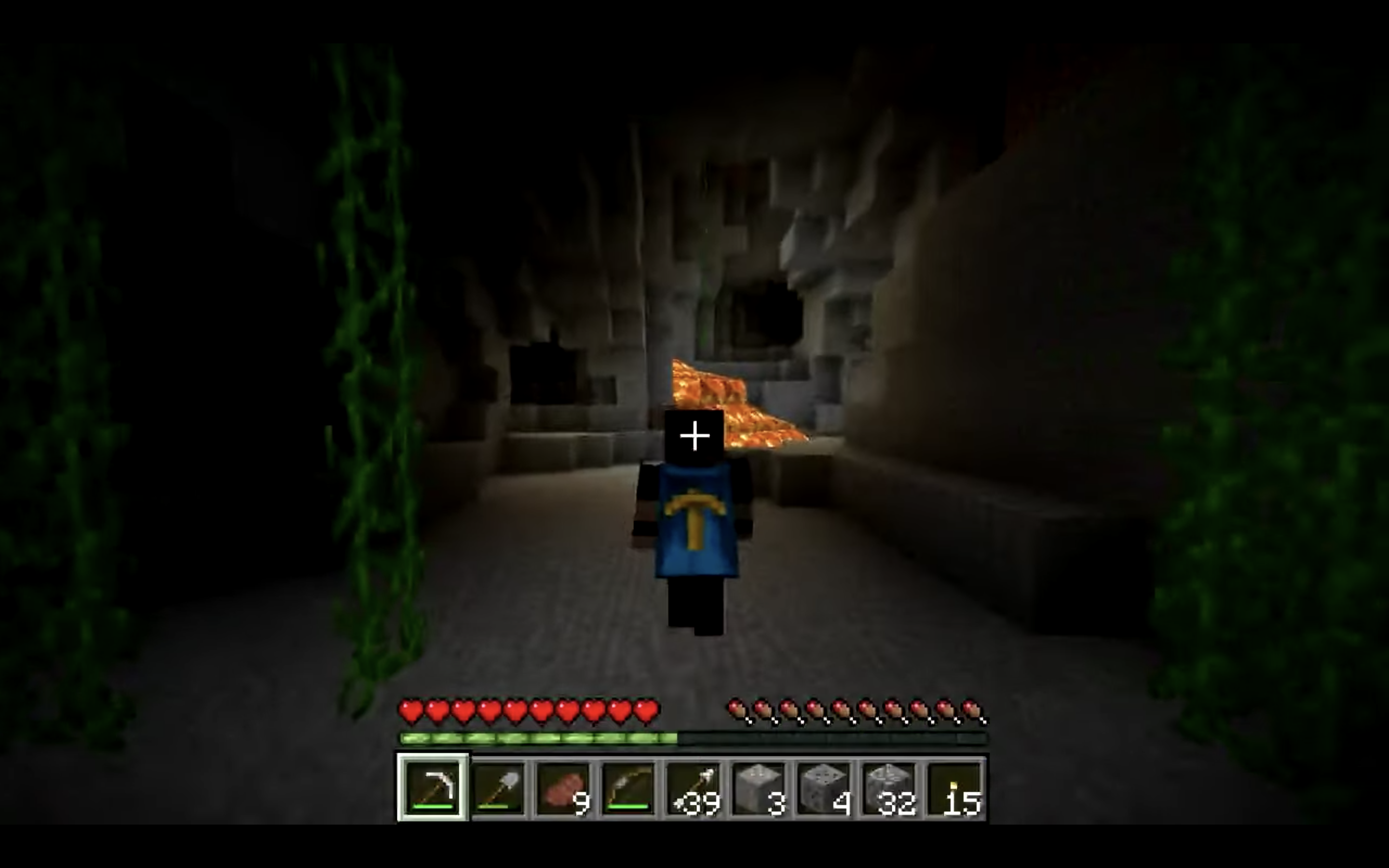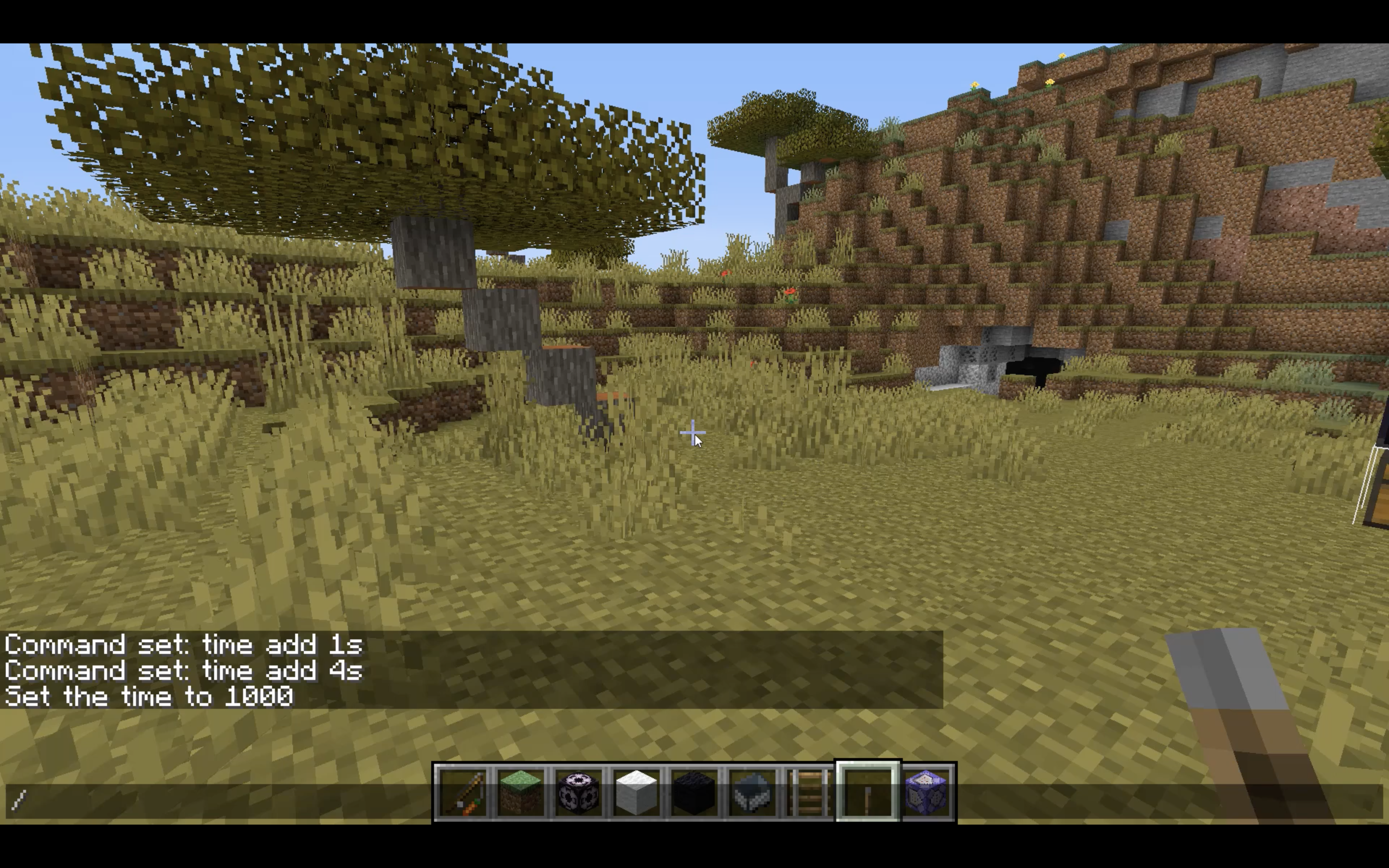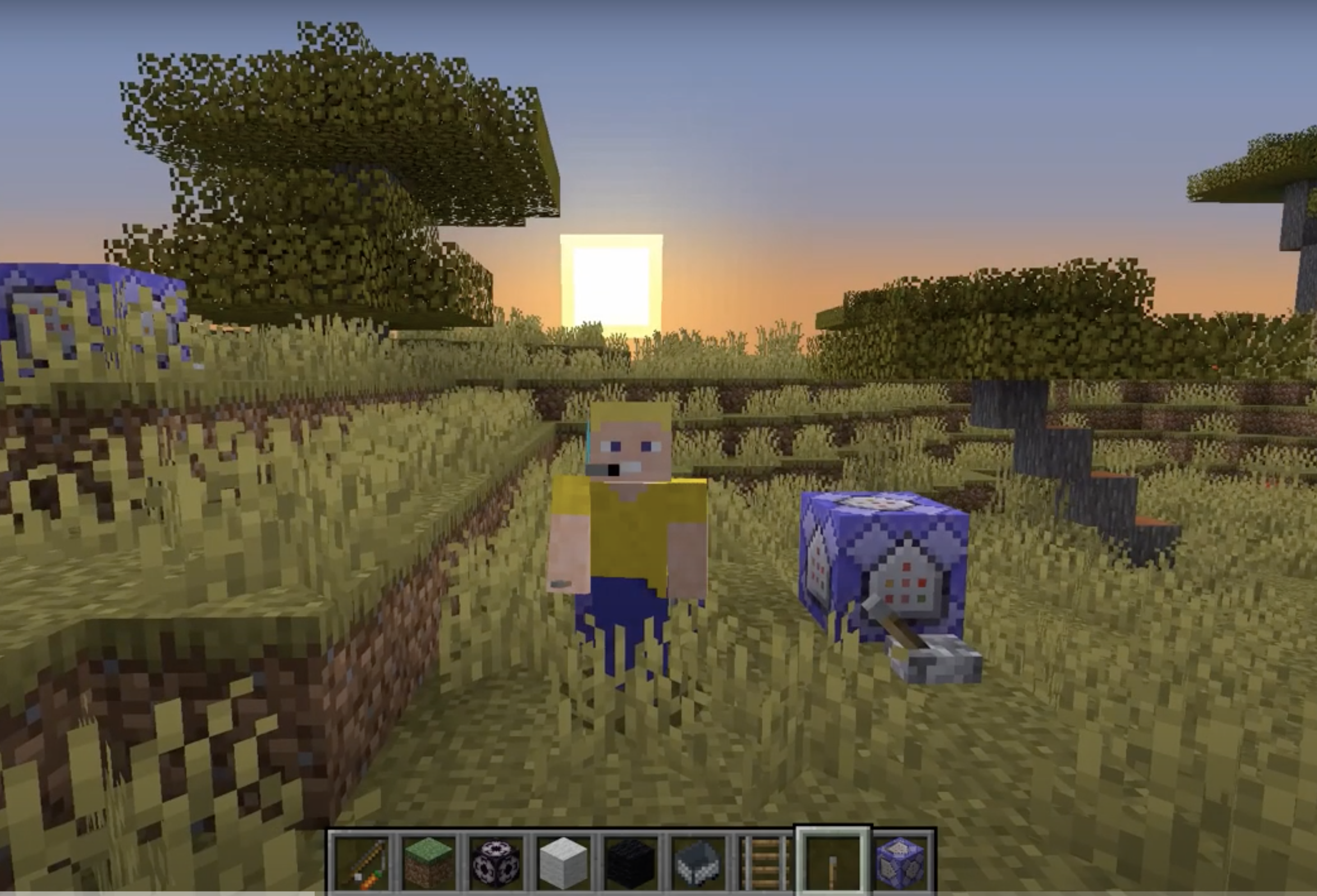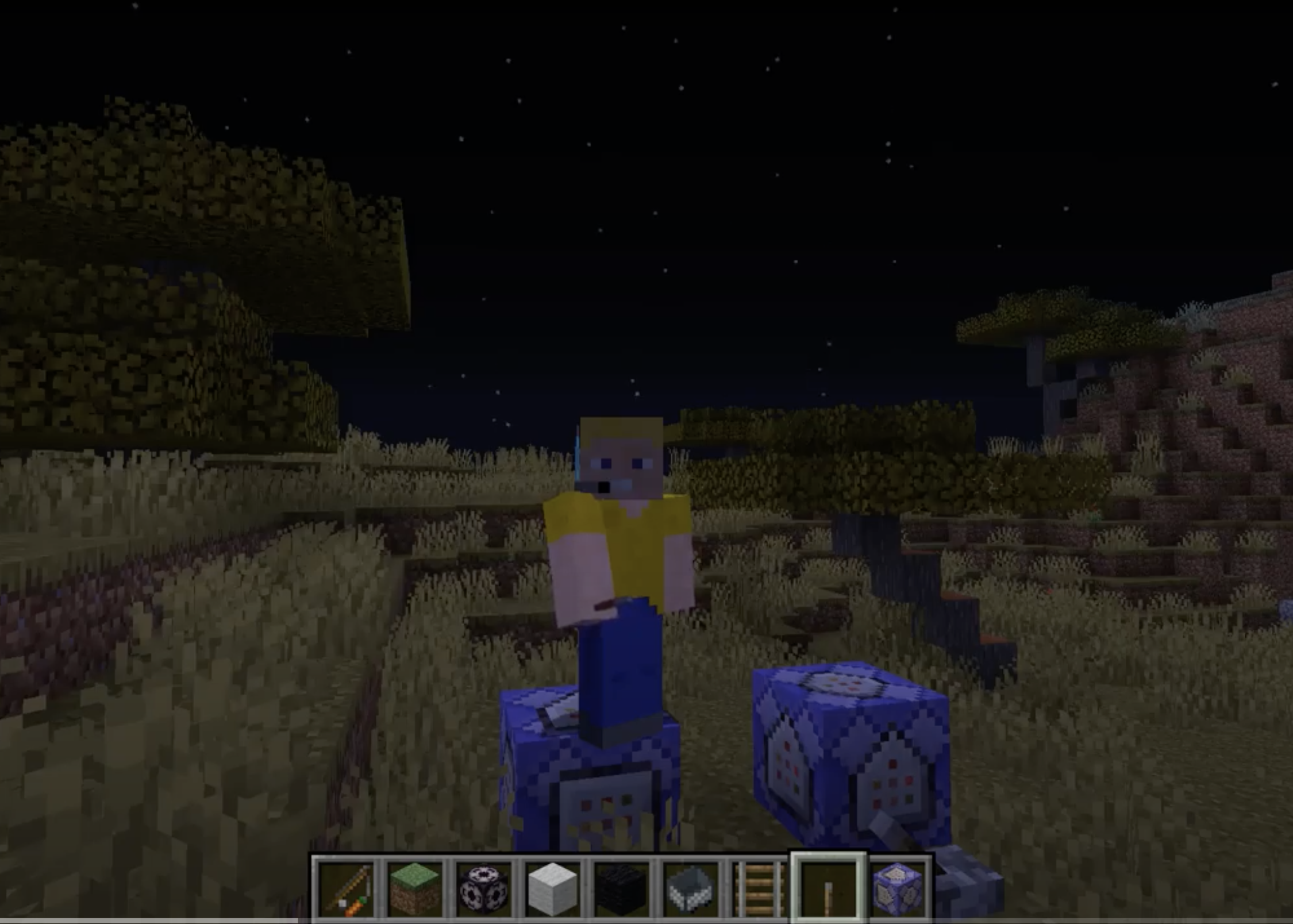Minecraft plays a huge roll in younger kids everyday lives in this current generation. The structure of how the gameplay is set up is fascinating to me because it has so many different levels to it and I believe subconsciously effects how kids view their actions in the real world. I wanted to look in depth at the game and how the different gameplay structures are used by analyzing basic game design structures in order to reflect the impact it has on kids.
I’m sure you already know what Minecraft is but just to recap, it is a sandbox/survival style game video game, about breaking and placing different kinds of 3D blocks. In Minecraft, players can explore, interact with, and modify a dynamically generated world of varying terrains and habitats.
Classical Conditioning
In Minecraft, Classical Conditioning is used to teach the player how to behave in the game through the association between the game characters attacking the player, and the defence mechanisms such as hiding or fighting of the player. The neutral stimulus in this case is a host of characters, including Zombies, spiders and Creepers will attack you when signalled. This can be seen for example in a hissing sounds. The game operates in 20 minute day and night cycles which creates the learning process, conditioning the player to follow along. The changing of cycle indicates the naturally occurring stimulus of certain behaviours that the player must obey in order to survive such as hiding or fighting the host characters because the activities are time sensitive.
Operant Conditioning
Looking at operant conditioning that occurs in Minecraft a very interesting thing to focus on is finding a group of diamonds. Finding a group of diamonds in Minecraft feels good because they are so scarce in the game. The Minecraft environment is like one big box where the spaced out rewards such as these diamonds increases the desired behaviour to play longer. Therefore, you are being conditioned to feel as though this action is unique because there are so few, in return creating greater value for it when it does appear. Another form of operant conditioning within Minecraft is the action of collecting experience points from items called Experience Orbs. These orbs allow the player to feel like they have found something special because this reward allows you to level up, making you more powerful and gives the ability to access new talents and weapons within the game. The fewer actions taken to get these rewards the more they seem valuable to us, so you feel that you must keep playing to get more. We put more worth on things the less there are, where in Minecraft there is infinite progression, there are endless opportunities without ever having to stop.
Reward Scheduling
Reward scheduling within Minecraft has no fixed storyline because it is a game that involves endless opportunities. This can be seen through depending on the game mode, where the central purpose is to survive and stay alive. Therefore this addresses the concept of a how Minecraft has many different types of reward schedules where this variation allows the player to work towards them at their own pace. Some examples can be seen is the central mechanic of mining. Mining is done through digging a hole in a cave in the ground to extract ores and other materials from below the surface of the map. These rewards can occur at unknown number of actions throughout the games environment because they are placed endlessly. This is an example a variable ratio reward schedule because it can happen at random times when participating in this action of digging while playing the game.
Another reward schedule is the endless opportunity of crafting. There are millions of things a player can craft in Minecraft from the materials they collect to make whatever they want. This idea relates to reward scheduling of fixed ratios where the reward of obtaining the item you have crafted occurs after the fixed amount of actions of collecting the right amount amount of materials in order to build it. The different combinations of different materials that are mined or collected can be crafted into things in form of recipes. The first example of these types of rewards includes a pix axe, where if the player collects 2 sticks and three planks they are able to create this weapon to keep in their inventory.
A similar reward created by this same scheduling is crafting a bed. To create a bed the player must kill three sheep, chop one block of wood and turn it into four planks, then retrieve your bed in the crafting table that you have now achieved. This bed is used to forward time to day during night. The last reward in this schedule is crafting a fence. In order to create this you must collect 2 sticks and 4 wood planks. This fence is used as a barrier that cannot be jumped over. After receiving the rewards of crafting the resources you create this leads you to a reward schedule of using your creations. For example if you work enough you can create a pond. From there with your experience points you can add a fishing feature. This reward in an example of variable interval reward through in order to catch a fish the player must wait a random interval of 5 to 30 seconds in order to hook the fish. If the player successfully reels in the fish they can get an experience orb worth 1-6 experience points at the location that they are fishing at.
Despite Minecraft being mostly open ended this demonstrates the relatively straightforward flow of the game where first, the player mines for the rewards of materials or experience orbs, than they use those materials to craft what ever items they want, some could be advanced with more complex features and some more simple, turning them into the reward of item that they can use to create more elaborate items that have more advanced features.
Camera Systems
The camera systems used in Minecraft is primarily following directly behind the player with spring physics. This can be seen in when the as the player walks, the camera follows behind them to show how fast they are going and makes the control of the player seem more realistic.
The different camera angle modes that Minecraft incorporates are first person mode and third person mode. First person mode is how most players play the game where the view is centred around the seeing right from the perspective of your player as if you are them. Third person mode is where you can see your character from higher and more top down view, yet still following directly behind them. This can be seen as automatic mode camera system where player is able to see the world from the view of camera that follows behind the player wherever they go.
Lighting
Focusing on just staying in creative mode in Minecraft the game is lit primarily all with flat light to guide the player to follow visual cues within the game. This is seen as mostly descriptive lighting to highlight the features in the game. This light is static and mostly warm tones.
One thing that varies in the lighting within Minecraft is when mining in a very narrow mine underground in the environment the light is darker and more eerie. This indicates a spatial contrast between the creating a more interior dark lighting to give a more realistic feel of being underground.
Another Lighting element is the temporal contrast of the external influence of the day and night cycle within the game. In the day the environment is bright with the light created from the perspective of the sun in the sky and at night the light disappears and the environment is dark.
Game Economics
Looking at the economic systems within Minecraft, its central activities include the concepts of accumulating and crafting. This is seen through the acquisition of items and acquisition of skills. An example of accumulating is how players can collect experience orbs which are experience points to be able to increase the abilities of many items such as weapons, armour, and tools. This addresses the economic mechanics of resources that are in the game world that are desirable to the player. Another example is the economic activity of crafting where the players will need to gather resources to feed themselves so that that they can maintain health. In order to produce their desired items to build shelter and make foods, players must learn to how to use a crafting grid and furnace to create these items in order to sustain themselves. This addresses the economic mechanics of drains, where the player turns the materials they collect to create food to sustain themselves (which is one resource) into another. In regards to building houses, feedback loops are reflected in this situation as well where the bigger the house the player has, the more building materials they need the keep it up resulting in negative feedback. The reverse of this can be seen as the more raw materials you have collected, the more building materials you can produce to craft items, resulting in positive feedback. Relating to this topic of materials, the market system within Minecraft can be seen in the collection of required ingredients in order to craft items. This is done through creating the demand and supply of needing food to survive to sustain your hunger points. A specific example of this is according to the different corresponding number of health points you must collect specific food ingredients in the environment in order to have enough to put in your crafting table. This in return results in an exchange of resources where the game system collects the materials presents you with an item. This overall concept of creating different items with the material you collect I find a very interesting choice by the designers because there are so many endless opportunities of what you could create. I think that the game designers use of experience points that the players can collect supplements the crafting of the items because it makes finding materials even more worthwhile. The design of crafting within the game allows the player to be as creative as they want in how they use certain materials which overall ties the game together. I personally find Minecraft very calming and entertaining because it is so open ended where I find myself leisurely creating items at my own pace without having any pressures of being forced to follow one path.
Conclusion
Overall I think the act of playing Minecraft is a meaningful experience for the younger audiences. The ability to search, dig, and craft anything and use it however they want in this never ending environment allows kids the freedom to be as creative as they want which is amazing. The ability to obtain rewards keeps kids playing continuously because of the day/night cycles and collecting more resources to continue within the game is very a valuable skill to have by actually teaching a basic level of how the economic system works. The use of the camera angles and lighting immerse even me into the game which I think makes it more realistic and enjoyable, which is a great way to fully engage kids. There are some downsides to the game as it is not greatly regulated, but I think being able to understand how to cultivate and grow things (such as the food), collecting by digging and saving resources are important skills that actually do apply to the real world. It represents the actions that we do in our daily lives and I think that playing the game does subconsciously affect how young kids learn these skills in a fun and engaging way.

